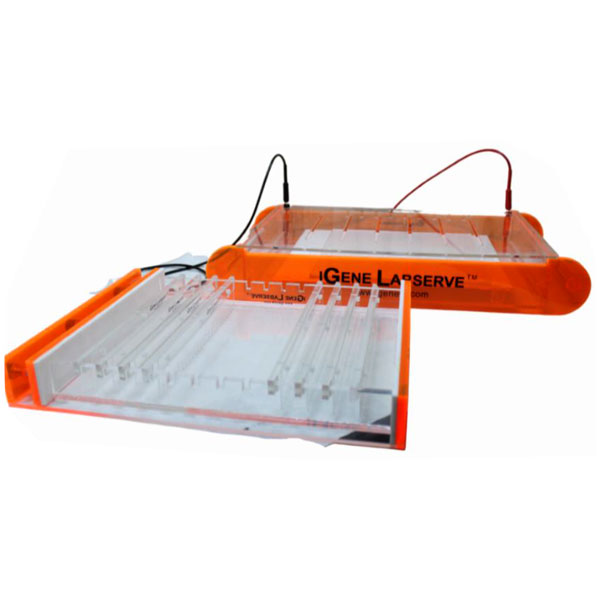Is two-dimensional gel electrophoresis a groundbreaking technique of proteomic research? The characterization of proteins within organisms, cells, and tissues is one of the major reasons why 2D gel electrophoresis has been there for over 25 years now. One of the essential laboratory techniques, the method also undergoes several modifications to cater to different purposes like starch electrophoresis, agarose gel electrophoresis, and polyacrylamide gel electrophoresis.
What is 2D gel electrophoresis?

Two-dimensional gel electrophoresis is a widely used technique needed for biochemic and proteomic research. It helps in identifying ribosomal proteins, membrane proteins, and proteins of various other organisms. The technique helps in the separation of protein mixtures from various biological samples. Usually, the nature of protein mixture is complex and the process of separation depends on two factors:
- The first technique is also called isoteric focusing or IEF in which proteins are separated based on the isoelectric points
- The second technique is polyacrylamide gel electrophoresis in which proteins separate according to the relative molecular weight.
With this technique, researchers can successfully separate thousands of proteins and keep track of IEF and relative molecular weights. Apart from separation of proteins, the 2D gel electrophoresis technique goes a long way in determining changes in the structure of proteins, detecting biomarkers, and analyzing whole proteomes. In each of these procedures, the method of electrophoresis needs to undergo modifications for successful analysis.
Method of conducting 2D gel electrophoresis
You are now familiar with what is 2D gel electrophoresis and it’s time now to understand the procedure in-depth. There are two major steps that one needs to understand in detail.
- First dimension
In the first-dimension as you have already read, the separation of proteins occurs based on isoelectric point, also called pl. Several methods like isoelectric focusing or IEF, non-equilibrium pH gradient electrophoresis or NEPHGE, and immobilized gradient electrophoresis are extensively used for recovering and recognising robust protein bands by exposing them to an immobilized pH gradient that is created by IPG strips. Proteins belonging to a specific range of pH can be separated using these first-dimensional methods.
- Second dimension
Here, protein separation takes place according to molecular weights. In the second dimension, separation is performed on vertical systems of flatbed located on slab gel. Usually polyacrylamide gel electrophoresis technique is applied for the separation of polypeptides based on molecular weights. To ensure better findings and accuracy, reagents and techniques are added along with a reducing agent like DTT to prevent oxidation. On the other hand, dyes and labelled antibodies help in determining targeted protein.
Once the second dimension procedure finishes, target protein is viewed through protein stains and fluorescent protein tags. After this comes protein visualisation through digestion and spot excision, and finally identification of the peptides obtained. Various other methods like chromatography, solubilisation, and protein fractionation are employed for further analysis and purification.
Applications of two-dimensional gel electrophoresis
Two-dimensional gel electrophoresis method is one of the foundational techniques facilitating proteomic studies and molecular biology research. Detecting and analysing proteins from complex mixtures look easy with this technique. The method also has a major role to play in bacterial pathogenesis, drug discovery, cancer research, and determining disease and biomarkers. Here are the two major applications of 2-D gel electrophoresis technique:
- Detecting proteins
The 2D gel electrophoresis technique finds wide and well-covered use in detecting protein alternations that often take place due to various diseases or the impact of drugs. Even small variations in isoelectric point or protein mass lead to major shifts in protein patterns. That is why researchers swear by this technique to determine those modifications in the structure of proteins.
- Analyzing proteins
With this method, several proteins can be separated with ease, making it one of the most preferred methods for the analysis of complex protein mixtures. The method successfully determines post and co-translational changes that is not easy to predict otherwise.
Biotechnology has greatly benefited from 2-D gel electrophoresis technique, and is one of the best-known methods to be used for studying the composition of proteins, the interactions, and alterations.
From precision to accuracy, your lab results get a new direction with the best quality equipment from I Gene Labserve. Just drop in at https://www.igenels.com/ to know more about how we have been reinventing scientific discoveries with the best-in-class equipment.
FAQ
- Which stain is commonly used in 2-D gel electrophoresis?
Usually, gels are stained using any fluorescent stain or Coomassie Blue, although they don’t have to be in a specific order as long as the gels are properly washed using high-purity water.
- Why is 2-D gel electrophoresis used?
With 2-D gel electrophoresis technique, proteomics and biochemistry research gets a new direction as it helps in identifying and analysing different unknown and known proteins.
- Which stain is used in 2-D gel electrophoresis method?
The stain used more often for 2-D gel electrophoresis is SYBR Gold that provides excellent results in various applications like northern blotting, single-strand conformation polymorphism, and denaturing gradient gel electrophoresis.

